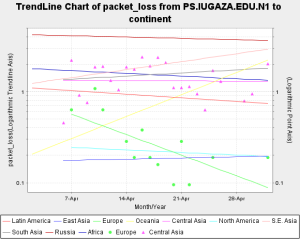
In March and April 2007 we worked with people from Palestine and the University at Bufffalo to install PingER Measurement Points (MPs) in Al Quds University in Ramallah and the Islamic University of Gaza. They were both connected to the Mediterranean fibre optic cable. There is a probability they will lose their connection to the Mediterranean fibre optic cable in Summer 2007.
Al Quds successfully installed PingER without help. It has been measuring and reporting since March 23, 2007. It has been very reliable with few losses of data.
Warren Matthews of Georgia Tech had to step in and assist IUGaza in getting PingER2 running. There were problems with the cronjob and possibly ntpd. IUGaza has been monitoring successfully since April 7th, 2007. They did not monitor data all day on April 22. There have been problems on 2 days gathering the data where I have either contacted the IUGaza site contact (Apr 28th to fix the web server) or had to re-run the gathering script (today).
On April 3rd the Al-Quds Open University said they would prepare a new machine and install software. I responded on April 4th and April 17th, but have heard nothing since. I prompted them again today.
The locations of the sites are shown below.

The graphs above show the derived TCP throughput using the Mathis formula. The macroscopic behavior of the TCP congestion avoidance algorithmby Mathis, Semke, Mahdavi & Ott in Computer Communication Review, 27(3), July 1997, provides a short and useful formula for the upper bound on the transfer rate:
Rate <= (MSS/RTT)*(1 / sqrt(p))
where:
Rate: is the TCP transfer rate or throughputd
MSS: is the maximum segment size (fixed for each Internet path, typically 1460 bytes)
RTT: is the round trip time (as measured by TCP)
p: is the packet loss rate.
In the left hand two graphs the data points (average throughput per month) are fitted to exponential functions and for simplicity the trend lines only are shown. These lines enable us to see that Rusia and Latin America are 6 years behind Europe, the Mid-East and SE Asia are 7 years behind, and S. Asia, C. Asia and Africa are 10 years or more behind. What is even more concerning is that Africa In particular), South and Central Asia are not catching up.
The right hand most figure shows the yearly average derived TCP throughput normalized by the minimum RTT for the region (to reduce the proximity effects). It is seen that the throughputs are not simply exponential straigh lines, but typically change in steps as major changes are made in the routing and circuits.
The main Autonomous System Domains (ASN) in the routes from SLAC to the Middle East countries for the sites we monitor are shown in the figure to the left below. It can be seen that many providers are used. The Palestinian sites (Gaza and the West Bank) use different providers from each other and from the neighboring countries. The figure on the right shows the ASNs used to route from Al Quds to various countries of the world.
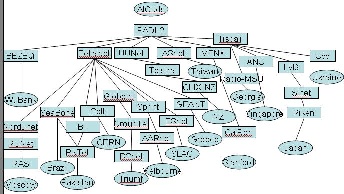
The hourly losses and RTTs seen from SLAC for Israel, Al Quds and IUGaza are shown below. It is seen that israel has almost no variability so the link is un-congested. Both the Al Quds and IUGaza time series show strong diurnal changes indication congestion/queuing during work hours. Comparing Al Quds and IUGaza it appears they have similar minimum RTTs of about 250ms. IUGaza has improved with less congestion since April 17, 2007. Al Quds had two periods of unreachability (100% loss on the green line).
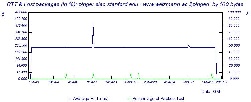

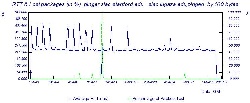
The monthly average Round Trip Times (RTTs) from Al Quds and IUGaza are shown below. The individual data points daily avergae(average_RTT) are shown to show the variability.

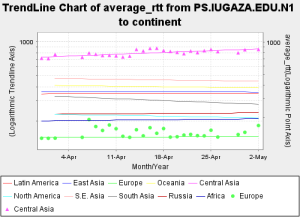
The minimum RTTs are shown below with the individual points (since minimum RTTs are more stable).
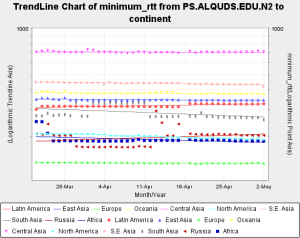
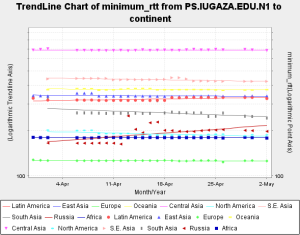
The packets losses are shown below:

